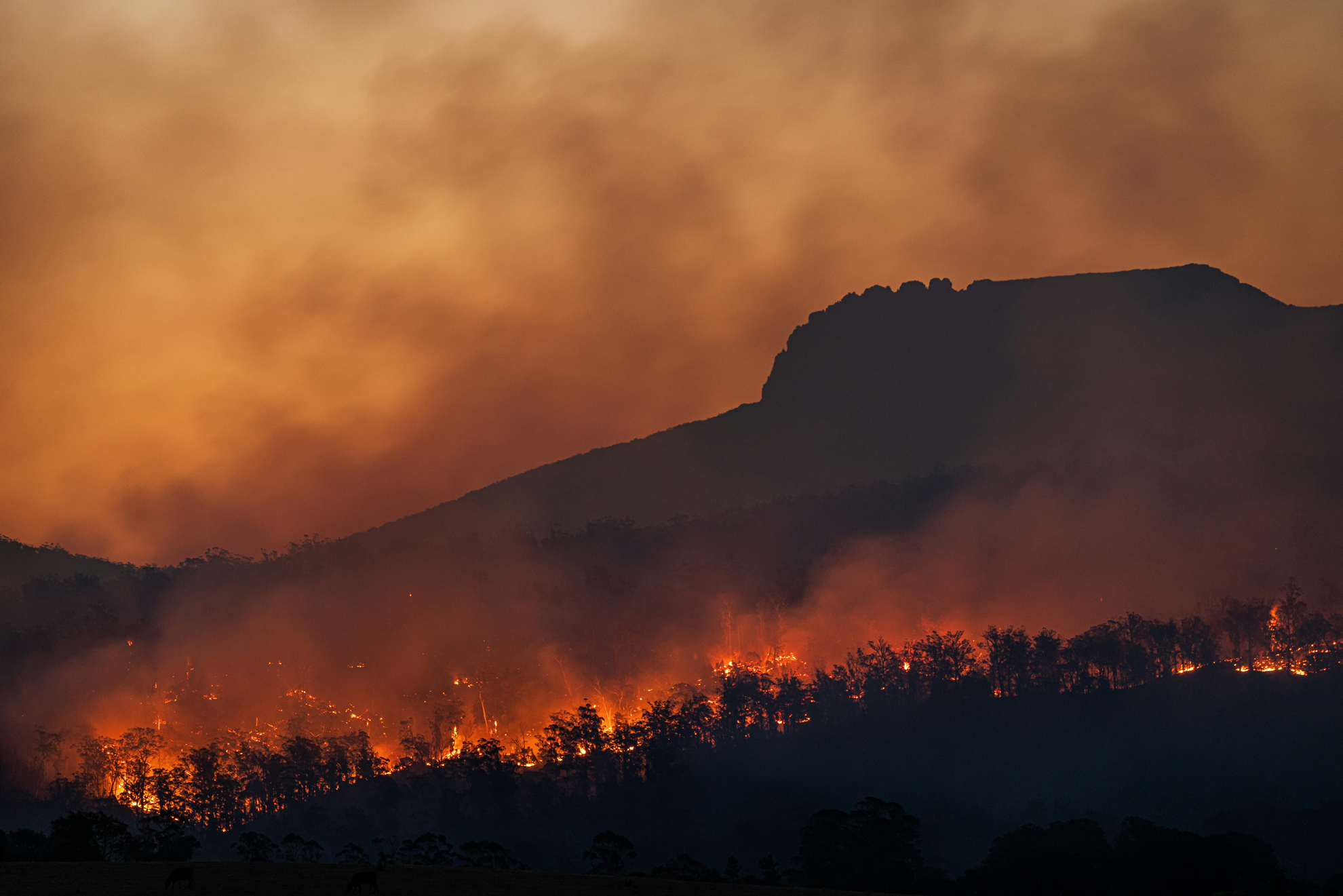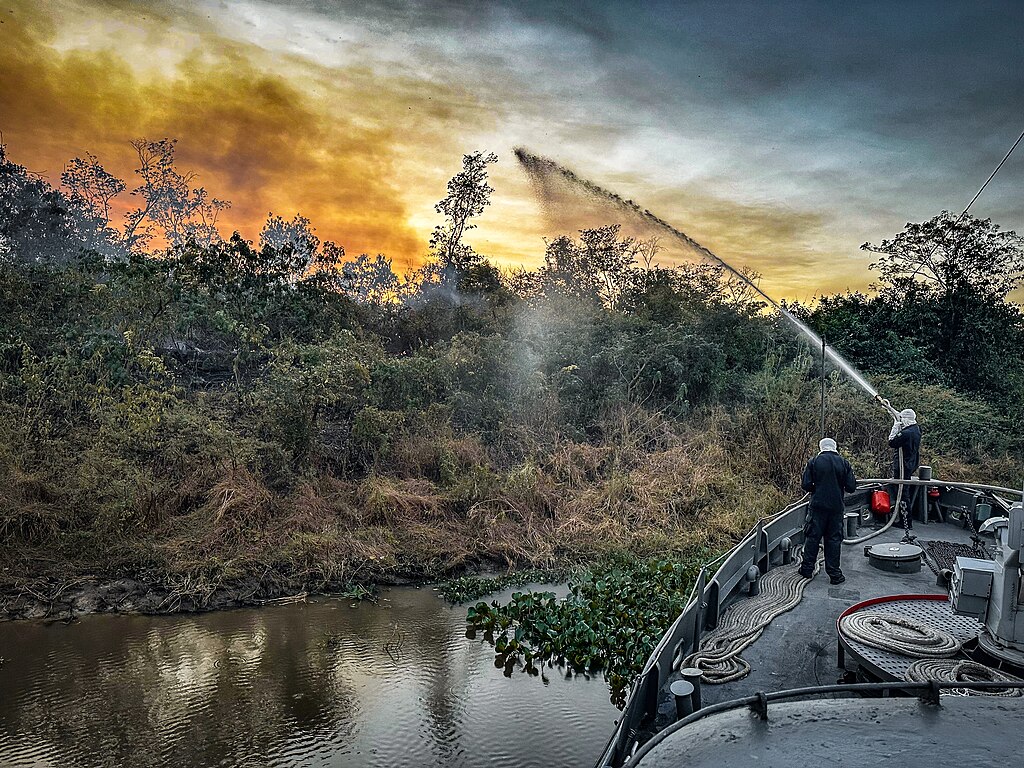State of Wildfires Report 2024 - 2025
View the executive summary or download the key messages or full report using the buttons below.
Human-driven climate change is fundamentally altering wildfire risks worldwide. New analyses of the 2024-25 fire season add to the growing evidence base that warming is making extreme wildfires more likely and more severe. Some of the most prominent extreme wildfire events of the global fire season, in Los Angeles and parts of South America, were 2-3 times more likely due to climate change, and the area burned by wildfires during those events was 25-35 times larger.
The consequences of extreme wildfires are being felt worldwide. Extreme events of the 2024-25 fire season brought fatalities across Asia, Africa, Europe, and the Americas, mass evacuations and record-breaking economic damage in Los Angeles, hazardous air pollution in Brazil, Bolivia, India, and California, and vast greenhouse gas emissions from carbon-rich forests in South America and Canada. The path to avoiding these consequences is clear: reduce global emissions rapidly, strengthen fire governance, and invest in adaptation to build resilience now.
The State of Wildfires Report, published in Earth System Science Data, is our second annual global assessment of extreme wildfire events. It documents when and where extreme wildfires events occurred, their impacts, why they happened, and the role of climate change. The project unites world-leading experts from more than 60 institutes across 20 countries.

Key findings from around the world
Fires emitted over 8 billion tonnes of CO₂ in 2024-25, about 10% above average since 2003. Emissions were over triple the global average in South American dry forests and wetlands, and double the average in Canadian boreal forests. The excess emissions alone exceeded the annual fossil fuel CO₂ emissions of more than 200 countries.
More than 100 million people were exposed to fire worldwide. At least 200 direct fatalities were recorded across seven countries, and over 150,000 people were evacuated from Los Angeles alone.
Air pollution spiked to between 13x and 60x above World Health Organisation (WHO) standards in Brazil, Bolivia, India, and California, creating acute and prolonged hazards to public health. 400+ excess deaths have since been attributed to smoke exposure in LA.
Globally, US$215 billion in physical assets were exposed to wildfires. The LA fires alone caused US$140 billion in total damages and around US$40 billion in insured losses — among the costliest wildfire events in history.
A record 18% of forest carbon projects worldwide were exposed to fire, particularly in North and South America, highlighting the need to integrate fire risk into the design and independent assessment of climate finance and mitigation strategies.
Key findings for the most extreme events of the fire season
Drought and heatwaves set the stage for four of the most prominent extreme wildfire events of the 2024-25 fire season, including Southern California (January 2025), Northeast Amazonia (early in 2024), the Brazilian Pantanal and Bolivian Chiquitano (August-September 2024), and the Congo Basin (July 2024). A number of exacerbating factors were present in Southern California, including unusually high fuel build-up during previous wet years and unseasonal heat and drought conditions in winter, which coincided with the timing of Santa Ana winds.
The four most extreme wildfire events of the 2024-25 fire season were more likely due to climate change, according to formal attribution analysis. In Southern California, fires on the extreme scale observed were twice as likely due to climate change, while the area burned during the event was amplified by a factor of 25. In Amazonia, the Brazilian Pantanal, and the Bolivian Pantanal, the fires were 2-3x as likely due to climate change, while the area burned increased between 4x to 24x.

In future, extreme fires will become more common due to warming that has already been committed through greenhouse gas emissions, but climate change mitigation can limit the increase in risk to minimal levels. In Amazonia and the Pantanal-Chiquitano, an extreme fire season on the scale of 2024-25 is projected to become 30-60% more frequent by 2100 under medium-high emissions, but strong mitigation holds the future increase to around 10-15%. In Southern California, projections are less certain, but fire seasons on the scale of 2024–25 are expected to remain a recurring risk under high emissions.
Extreme wildfire seasons that were unlikely within the lifetime of previous generations are projected to be more likely than not within the lifetime of today's children. For example, in northeast Amazonia, someone born in the 1940s had only a 33-36% chance of experiencing a 2024-scale fire season, whereas a child born today faces a 52-59% chance of seeing at least one such seasons under a medium-high emission scenario and a 17-32% chance of seeing at least two two.